Understanding Lab Diamonds: Testing and Performance Insights
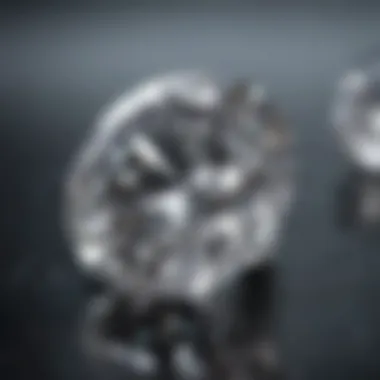
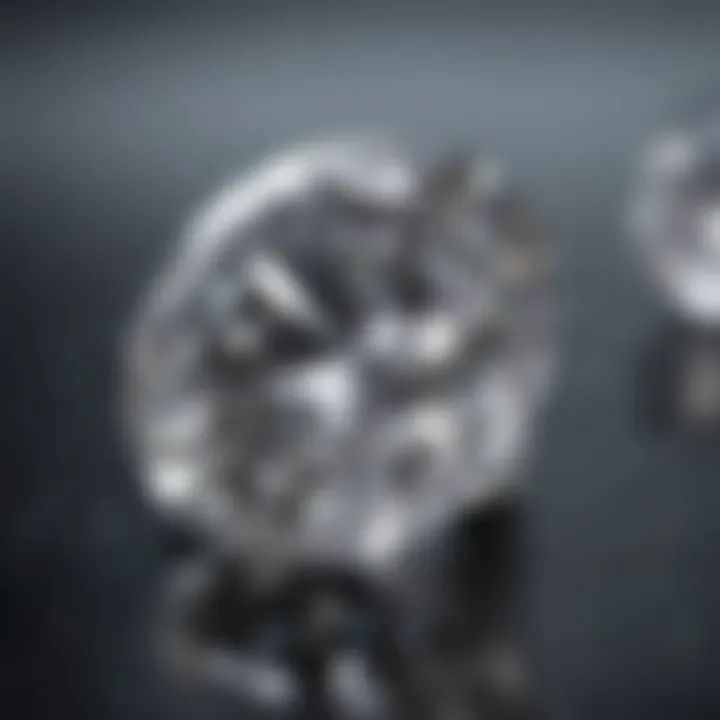
Intro
The significance of lab diamonds in today’s gem market cannot be overstated. With advances in technology, the creation of diamonds in laboratory settings has gained traction. They present a compelling choice for consumers and also raise questions regarding their authenticity and how well they perform on diamond testers. Understanding lab diamonds involves examining their properties, the science behind their testing, and the broader implications for buyers and sellers.
Gemstone Overview
Definition and Characteristics
Lab diamonds are diamonds that are created through technological processes, replicating the natural conditions under which diamonds form. Unlike natural diamonds, which take millions of years to develop, lab diamonds can be produced in a matter of weeks. Their chemical composition is identical to that of natural diamonds, consisting of carbon atoms arranged in a crystal structure. This makes lab diamonds physically, optically, and chemically the same as their natural counterparts.
Classification of Gemstones
Gemstones are categorized based on their origin, either natural or synthetic. Natural gemstones form in the earth over time, while synthetic ones, like lab diamonds, are produced in controlled environments. Within the realm of gemstones, lab-grown diamonds fall under the synthetic category and are increasingly recognized for their ethical production and environmental benefits.
Historical Significance
Ancient Uses and Cultural Importance
Throughout history, diamonds have held immense value and significance in various cultures. In ancient civilizations, diamonds were often associated with strength and protection. They were used in jewelry and held in high esteem for their perceived power and beauty. The concept of lab diamonds, however, is relatively new, emerging primarily in the 20th century, yet it challenges long-held views about what constitutes a genuine gemstone.
Myths and Legends Surrounding Gemstones
Diamonds have been surrounded by numerous myths and legends. Many cultures believed that wearing diamonds could bring strength and clarity. However, lab diamonds introduce new narratives. There are misconceptions around them being less prestigious due to their artificial origins.
"Lab diamonds possess the same brilliance as natural diamonds, but they challenge traditional notions of rarity and value."
Their rise calls for a reevaluation of long-standing beliefs around gems and gems purity. The ability to analyze and test both types of diamonds is crucial in determining their validity in the market.
The Science of Diamond Testing
In understanding how diamond testers evaluate both lab-grown and natural diamonds, it is essential to have a grasp of the types of testing methods available. Common methods include thermal conductivity testing, electrical conductivity testing, and spectral analysis. Each technique has its merit in distinguishing between the two types of diamonds, contributing to the comprehensive evaluation required by buyers and professionals in the industry.
The implications for how lab diamonds perform on these tests often depend on the specific technology used. Certain testers may accurately identify lab diamonds, while others may not, leading to potential confusion in the marketplace. Furthermore, the role of expert evaluation is indispensable here. It helps in providing clarity and assurance to both buyers and sellers about the authenticity of the gemstones in question.
Finale
Lab diamonds continue to shape the landscape of the gemstone industry. Their performance on diamond testers illustrates the need for informed decisions in a complex market. As we further unpack the nuances of diamond testing, it will become clear that understanding lab diamonds is crucial for all stakeholders involved. With ethical concerns and environmental impacts at the forefront, lab diamonds offer a unique perspective in the evolving conversation about gemstones.
Prelude
Lab diamonds represent a significant innovation in the jewelry industry. As their popularity grows, it becomes essential to understand their properties thoroughly. This article explores how lab diamonds perform on diamond testers, an important aspect for buyers, sellers, and enthusiasts alike. The performance of these diamonds under scrutiny impacts consumer perceptions and purchasing decisions.
Understanding the dynamics between lab diamonds and testing methods is crucial. It sheds light on the attributes that can influence a buyer's choice. Evaluating lab-created diamonds against diamond testers not only verifies their authenticity but also establishes their standing in the market. This will address several critical factors surrounding lab diamonds, including their creation process and the technology behind diamond testing.
Knowledge of lab diamonds and their results on testers enhances informed decision-making. It equips consumers and professionals with necessary insights related to quality, performance, and pricing. Through thorough examination, we aim to clarify misconceptions, thus fostering an educated marketplace.
Defining Lab Diamonds
Lab diamonds are created in controlled environments using advanced technology that replicates the natural diamond formation process. They have the same physical, chemical, and optical properties as natural diamonds, differing primarily in their origin. Typically, lab diamonds are grown using one of two methods: High Pressure High Temperature (HPHT) or Chemical Vapor Deposition (CVD). Each method results in gems that are virtually indistinguishable from those mined from earth.
One benefit to lab diamonds is their relative affordability. They can offer the same visual appeal at significantly lower prices. Additionally, lab diamonds are often considered more ethical, as their production does not contribute to the concerns surrounding blood diamonds. Understanding these aspects is vital for anyone interested in purchasing diamonds today, especially for those who prioritize sustainability.
Overview of Diamond Testers
Diamond testers are instruments used to determine the authenticity of a diamond. They are crucial in distinguishing natural diamonds from other gemstones, including lab-created ones. The primary function of these testers is to measure certain properties that diamonds possess, which other materials do not. There are several types of diamond testers, which rely on different principles.
- Thermal Conductivity Testers: These testers measure how well a stone conducts heat. Diamonds, both natural and lab-created, are excellent conductors of heat.
- Electrical Conductivity Testers: These devices assess the electrical conductivity of the stone. They are particularly useful in identifying moissanite, which has different conductive properties.
- Moissanite Testers: These are specialized testers that differentiate diamonds from moissanite.
Understanding how these testers operate is key for a deep appreciation of how lab diamonds perform under examination. It is essential for both consumers and jewelers to grasp the functioning and limitations of these devices to avoid misidentification and to ensure the stones' authenticity.
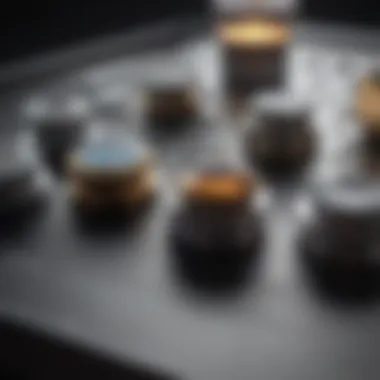
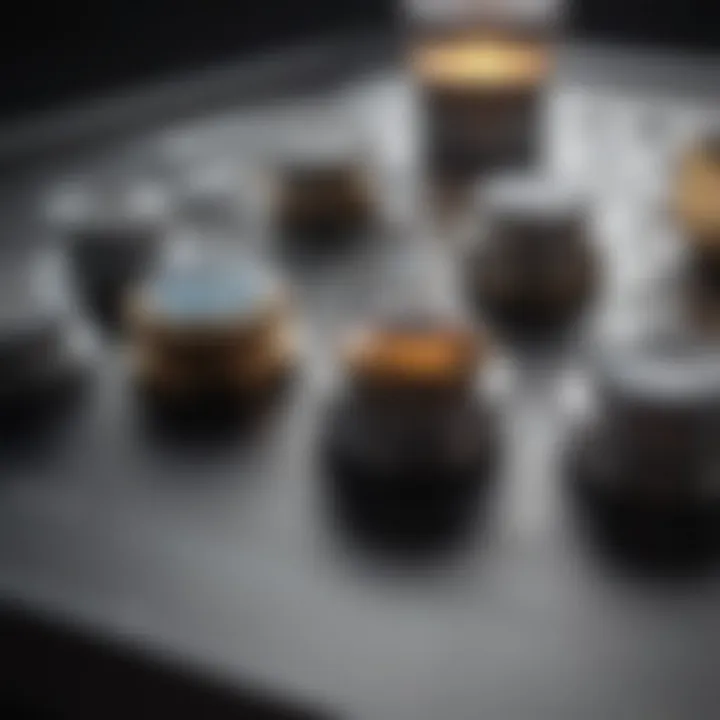
The Science of Diamonds
Understanding the science behind diamonds is crucial for anyone interested in gemstones, especially for discerning the differences between natural and lab diamonds. This section addresses the fundamental aspects of diamond formation, the methods used to create lab diamonds, and their unique crystal structures. These foundational pieces of knowledge inform not only the performance of diamonds on testers but also their market value and consumer perception.
Formation of Natural Diamonds
Natural diamonds form deep within the Earth under intense heat and pressure over millions of years. This process takes place in the mantle, where carbon atoms bond in a crystal lattice structure. The journey of these diamonds to the surface is a rare geologic event, often triggered by volcanic eruptions.
The uniqueness of natural diamonds is derived from specific conditions including:
- Temperature and pressure: These factors influence the growth rate and environmental conditions where diamonds form.
- Impurities: Natural diamonds may contain trace elements, which can affect the color and clarity of the stone.
- Time: The lengthy timeframe of natural diamond creation contributes to their rarity.
Understanding these elements is essential for appraising the value of natural diamonds, as their origin plays a substantial role in their desirability.
Creation of Lab Diamonds
Lab diamonds are synthesized using advanced technological techniques that replicate the natural formation process. The two primary methods for producing lab diamonds are High-Pressure High-Temperature (HPHT) and Chemical Vapor Deposition (CVD).
- HPHT: This method mimics the natural conditions under which diamonds are formed. Carbon is subjected to extreme heat and pressure, resulting in the creation of diamond crystals within days rather than millions of years.
- CVD: In this approach, a gas mixture is introduced into a chamber, where carbon atoms are deposited onto a substrate, layer by layer, forming diamonds over time.
The resulting diamonds from both methods exhibit properties that are chemically and structurally identical to natural diamonds, challenging traditional perceptions regarding sourcing and value.
Crystal Structure Comparison
Both natural and lab diamonds share the same tetragonal crystal structure. However, the growth patterns can differ notably:
- Natural diamonds: Their growth often results in unique inclusions and imperfections, which can be valuable for identification.
- Lab diamonds: These usually have fewer inclusions due to controlled manufacturing environments, but specific patterns may emerge based on the production method used.
"While lab diamonds possess the same physical and optical properties as natural diamonds, the way they form can result in distinct characteristics."
From a performance perspective on diamond testers, the similarities in crystal structure and optical properties mean that lab diamonds can test similarly to natural diamonds under most conditions. This intricate understanding of diamond formation and structure is vital for jewelers, gemologists, and consumers alike.
By recognizing these scientific principles, buyers can make informed decisions, navigating the market for both lab and natural diamonds with greater clarity.
Understanding Diamond Testers
Understanding diamond testers is critical to evaluating lab diamonds. The way diamonds interact with these testers influences buying decisions and market perceptions.
Diamond testers assess different properties of diamonds, particularly their thermal and electrical conductivities. These properties are essential in distinguishing between natural and lab-grown stones, as well as separating genuine diamonds from simulants like moissanite. The right tester can help jewellers and consumers make informed choices.
When considering diamond testers, a few key elements come into play. First, understanding how each type of tester works is vital. Different testers serve unique purposes and carry distinct benefits and drawbacks.
Types of Diamond Testers
Thermal Conductivity Testers
Thermal conductivity testers are tools that evaluate how heat travels through a stone. Their primary focus is to distinguish diamonds from other materials based on heat transfer. Diamonds possess a high thermal conductivity, making these testers effective and reliable.
The key characteristic of thermal conductivity testers is their speed. They provide instant feedback when applied to a stone. This immediacy is beneficial for jewellers who need quick and accurate assessments.
However, these testers have limitations. They may deliver inaccurate readings if improperly calibrated or if environmental conditions affect the test, such as temperature fluctuations in the area of testing.
Electrical Conductivity Testers
Electric conductivity testers work by measuring how well a material conducts electricity. While diamonds are generally considered electrical insulators, some lab-created diamonds can exhibit slight conductivity due to the presence of metallic impurities.
This method is preferred in certain situations because it provides another layer of verification. An added advantage is the ability to identify fake stones that may mimic the appearance of diamonds yet fail to possess the necessary electrical properties.
On the downside, these testers can mistakenly flag lab diamonds as simulants if the calibration is off. Proper calibration strengthens their reliability, making them a worthy choice in this assessment.
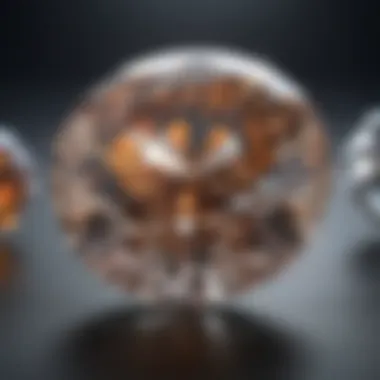

Moissanite Testers
Moissanite testers carefully differentiate between diamonds and moissanite. They are crucial because moissanites are often sold as diamonds due to their similar looks. Such testers assess both thermal and electrical conductivities to establish the identity of the stone.
A significant attribute of moissanite testers is their specialized design. They target the unique properties of moissanite to ensure accuracy. This tailored approach is why many in the industry find them beneficial.
Still, one should be cautious. If used improperly, these testers might yield false positives or negatives. Thus, understanding how to operate them accurately is essential.
How Diamond Testers Work
Diamond testers function by detecting properties inherent to diamonds and distinguishing them from other gems. The process typically involves placing the tester's probe directly against the stone. After activation, the device measures the thermal or electrical response.
For thermal conductivity testers, conductive heat flows are analyzed, producing a reading indicative of a diamond or other material. In contrast, electrical conductivity testers assess the current flow through stones. This creates a straightforward and effective means of verifying the authenticity of the gemstone.
Moissanite testers, with their dual-functionality, capitalize on both methods to provide more reliable results when differentiating between diamonds and moissanites.
"Understanding how diamond testers work is key to ensuring confidence in evaluating lab diamonds against natural stones."
Lab Diamonds and Diamond Testers
Understanding lab diamonds and their interaction with diamond testers is crucial for both buyers and sellers in the gemstone market. Lab-created diamonds exhibit properties that mirror those of natural diamonds, making their evaluation by testers a valuable topic. This understanding helps in making informed decisions about purchases and setting expectations regarding the legitimacy of lab diamonds in comparison to natural ones. The discussion of lab diamonds often leads to misconceptions, and it is essential to clarify these points to enable better consumer knowledge.
One of the critical questions that arise is, Do lab diamonds pass diamond testers? This aspect reveals insights into the fundamental characteristics of lab diamonds and their thresholds when assessed against various testing devices. Furthermore, understanding the factors influencing tester results, such as temperature variations and tester calibration, plays a significant role in interpreting the outcomes of diamond tests. Such knowledge can greatly assist enthusiasts, collectors, jewelry designers, and geology lovers in distinguishing between lab-grown and natural stones effectively.
Do Lab Diamonds Pass Diamond Testers?
Lab diamonds generally do pass diamond testers, but results can vary based on the specific testing methods used. Most diamond testers measure certain attributes like thermal or electrical conductivity. Lab diamonds, being composed of the same carbon structure as natural diamonds, often replicate the same readings on testers, depending on the device used. However, unique types of lab diamonds may present challenges or discrepancies in detection, especially when a tester is calibrated to differentiate between diamonds and moissanite or other similar materials.
It is essential for consumers to choose reliable testers that consider specific advanced features when assessing lab diamonds. Differences in testing technology can lead to varying levels of accuracy. Therefore, understanding the type of diamond tester being used can illuminate whether one can expect consistent results when evaluating lab diamonds.
Factors Influencing Tester Results
Temperature Variations
Temperature variations significantly contribute to the performance of diamond testers. Most diamond testers require a certain operational range of temperature to function effectively. If the environment is too hot or too cold, the readings can become inaccurate. The key characteristic of temperature variations is that they impact the conductivity of the diamond during testing. This factor makes it necessary to conduct tests in controlled environments to achieve reliable results. Temperature can hinder the testing accuracy because it can either amplify or diminish the perceived thermal conductivity of lab diamonds. Increased understanding of this allows buyers to appreciate why testing conditions are as essential as the tester itself.
Tester Calibration
Tester calibration is another vital aspect influencing the results obtained from diamond testers. Calibration ensures that the device operates within expected parameters, offering the most accurate readings possible. The key characteristic of proper calibration is its ability to minimize errors in response. It allows the tester to provide clear distinctions between lab diamonds, natural diamonds, and other similar stones. The unique feature of tester calibration is its capability to tailor settings based on specific testing conditions. When calibration is performed correctly, it enhances the reliability of the testing results. Conversely, poorly calibrated testers can lead to misleading conclusions about a diamond's nature, impacting purchasing decisions significantly.
Reliable diamond testers are essential for accurate identification and classification.
Market Perspectives on Lab Diamonds
The emergence of lab diamonds has introduced significant shifts in the diamond industry. Understanding the market perspectives surrounding lab diamonds is essential for both consumers and professionals in the gem market. This section highlights several key aspects including consumer education, market pricing, and the implications for buyers in their purchasing decisions.
Consumer awareness is critical as potential buyers navigate their options. Many individuals may still hold misconceptions about lab diamonds, viewing them as inferior to natural stones. In reality, lab diamonds possess the same physical and chemical properties as natural diamonds. By promoting accurate information, the industry can enhance customer confidence in lab diamonds, leading to increased acceptance and demand.
Consumer Awareness and Education
Consumer education plays a pivotal role in shaping perceptions towards lab diamonds. The general public frequently lacks comprehensive knowledge regarding the processes of creation and certification of lab diamonds. As institutions and businesses invest in informative campaigns, they can demystify how lab diamonds are made, stressing their authenticity and ethical implications.
- Educational Workshops: Hosting events or workshops can aid in dispelling myths and providing firsthand knowledge to consumers.
- Online Resources: Utilizing social media platforms like Reddit and Facebook can facilitate discussions and spread awareness more broadly.
These measures foster a well-informed customer base, enabling better decision-making concerning purchases.
Pricing Comparisons: Lab vs. Natural Diamonds
Pricing dynamics between lab diamonds and natural diamonds are another critical facet of market perspectives. Generally, lab diamonds are more affordable. This price difference can be attributed to factors such as market demand, production costs, and the perceived value assigned by consumers.
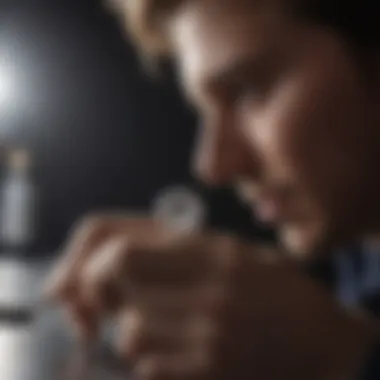
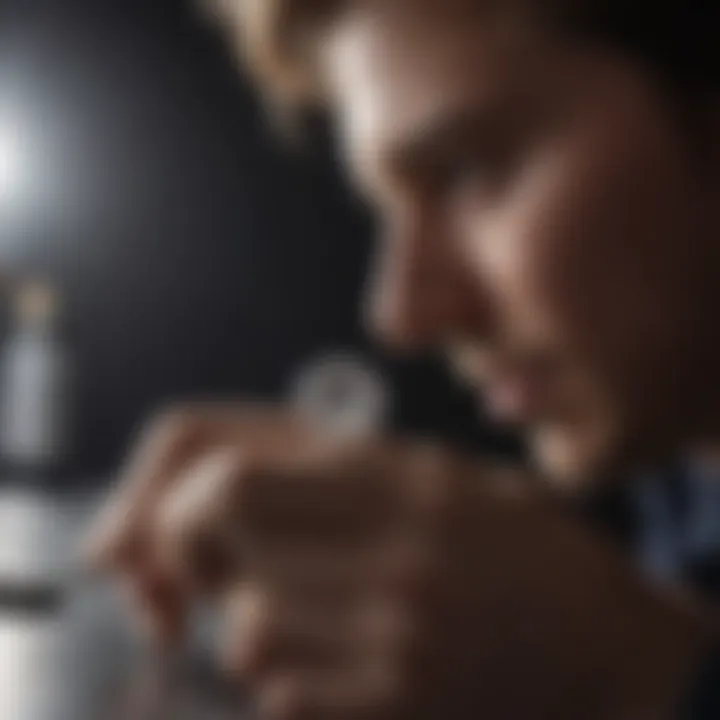
- Cost-Effectiveness: Often lab diamonds can be 20-40% cheaper than comparable natural diamonds. This cost advantage appeals to budget-conscious buyers.
- Investment Factors: While natural diamonds may have a historical allure and potential for appreciation, lab diamonds are increasingly viewed as a savvy purchase for those prioritizing value.
Addressing pricing clearly illustrates the benefits for consumers while providing valuable insights on potential risks for long-term investment considerations.
"The market for lab diamonds is evolving rapidly, influencing not only pricing but also consumer behavior and industry standards."
By thoroughly understanding these market perspectives, individuals can make informed decisions in a multifaceted gemstone market.
Expert Opinions on Lab vs. Natural Diamonds
The discussion surrounding lab diamonds versus natural diamonds has garnered significant attention in recent years. Gemologists and jewelers provide crucial insights that help shape consumer understanding. Their perspectives are rooted in extensive training and experience, which makes their viewpoints trustworthy when assessing the nuances between these two types of diamonds.
Understanding these expert opinions is vital for consumers. It helps in navigating the gem market and making informed purchasing decisions. With an ever-growing variety of lab diamonds available, apprehension among buyers can arise regarding quality, value, and authenticity. Experts from both spheres bring clarity, presenting essential details about the differences in formation, appearance, and overall value.
Gemologists' Insights
Gemologists often emphasize the scientific accuracy of lab diamonds. They argue that lab diamonds share the same physical and chemical properties as natural diamonds. Gemologists employ tools like spectrometers to analyze these gems. Their assessments reveal that both types exhibit similar light dispersion and brilliance. However, gemologists also highlight that subtle inclusions or growth patterns can occasionally distinguish lab diamonds from their natural counterparts.
Key Observations:
- Formation Process: Lab diamonds are created through high-pressure, high-temperature (HPHT) methods or chemical vapor deposition (CVD) techniques. Natural diamonds, on the other hand, are formed over billions of years under the Earth's crust.
- Market Value: Lab diamonds usually have a lower price point compared to natural diamonds. Gemologists suggest that buyers should consider both cost and personal preferences when making a choice.
- Ethical Considerations: Many gemologists advocate for lab diamonds as an environmentally friendly alternative, reducing the impact associated with mining operations.
Jeweler Perspectives
Jewelry professionals provide another dimension to the discussion on lab versus natural diamonds. They interact directly with consumers and thus hold a pulse on market trends and consumer sentiment. Many jewelers appreciate the affordability of lab diamonds, which allows a broader audience access to diamond jewelry. However, they often note the challenges of communicating the value of lab diamonds compared to natural diamonds, which carry a weight of tradition and perceived rarity.
Key Considerations:
- Consumer Trust: Jewelers often emphasize the importance of trust in their relationships with consumers. They strive to inform customers about the origins and characteristics of every stone. This commitment aids clients in making confident choices.
- Inventory and Selection: Many jewelers are expanding their inventory to include a diverse range of lab-grown options, responding to consumer demand while balancing traditional offerings.
- Custom Designs: Some jewelers use lab diamonds in unique custom pieces, appealing to an eco-conscious clientele while maintaining traditional craftsmanship.
The Future of Lab Diamonds
The future of lab diamonds is a topic that resonates deeply within the jewelry industry as well as among consumers. As the demand for sustainable and ethically sourced gemstones continues to grow, lab-grown diamonds stand at the forefront of this movement. Many buyers today are more informed and conscious about their purchases. They value transparency and environmental considerations. The evolution of lab diamonds signifies a shift in consumer preferences and market dynamics.
The relevance of this section lies in understanding how technological advancements and ecological implications are shaping the landscape for lab diamonds. Emerging technologies improve the quality, affordability, and accessibility of these diamonds. Thus, they are becoming more desirable in the eyes of potential buyers. Moreover, as we delve into the ecological aspects, it becomes clear that lab diamonds offer a compelling alternative to traditional diamond mining, which has often raised ethical and environmental concerns.
Technological Advancements
The advancements in technology play a pivotal role in the evolution of lab diamonds. Innovations in diamond-growing techniques have improved diamond quality significantly. Methods such as Chemical Vapor Deposition (CVD) and High Pressure High Temperature (HPHT) continue to refine the process of creating lab diamonds, making their characteristics increasingly akin to those of naturally sourced diamonds.
- Improved Production Techniques: Modern laboratories can now produce diamonds with fewer inclusions and more desirable colors. The application of advanced imaging technology during the production process helps diamond creators monitor the conditions accurately and adjust parameters for optimal growth.
- Cost Efficiency: The reduction in production costs directly influences market pricing. As competition increases among manufacturers, prices for lab diamonds are likely to decrease, making them accessible to a larger audience.
- Consumer Preferences: Technological improvements are not limited to production. Online retailers and platforms use augmented reality and virtual try-on technologies, committing to enhance shopper experiences. This change fosters engagement and interest in lab diamonds as buyers can visualize their prospective purchases more effectively.
Ecological Implications
The ecological implications of lab diamonds are significant and warrant close attention. As natural diamond mining presents considerable environmental challenges, the lab-grown alternative emerges as a more sustainable option.
- Reduced Environmental Footprint: The process of mining natural diamonds often leads to habitat destruction and pollution. In contrast, lab-grown diamonds require fewer natural resources and less energy, which translates to a smaller ecological footprint.
- Sustainable Practices: Many lab diamond manufacturers prioritize sustainability within their operations. They often utilize renewable energy sources or implement recycling methods for water and materials. Such measures reduce the overall impact on the planet and appeal to environmentally conscious consumers.
- Social Responsibility: Consumers are increasingly seeking products that reflect their values. Lab diamonds, often promoted as conflict-free, align with ethical consumerism and resonate with those who prioritize sourcing from responsible practices.
"Lab diamonds represent not just an innovation in the gemstone market but also a commitment to sustainability and ethical standards that cannot be ignored."
In summary, the future of lab diamonds reflects a convergence of technological prowess and ecological mindfulness. As the industry evolves, lab-grown diamonds will continue to redefine consumer expectations and set new benchmarks for what diamonds can represent.
Epilogue
The conclusion serves as a critical bridge that synthesizes the information discussed in this article on lab diamonds and their performance on diamond testers. Throughout the various sections, we have explored the science behind diamond formation, the different types of diamond testers, and how lab diamonds measure up against natural diamonds.
Understanding how lab diamonds perform on testers is vital for a variety of stakeholders, including gemstone collectors and jewelry designers. Buyers need to be informed about the testing processes to make educated purchases. Sellers, on the other hand, can leverage this knowledge to offer products that meet consumer expectations and regulatory standards.
Additionally, grasping the nuances of how temperature variations and tester calibration can affect outcomes is crucial for accurate assessments. Awareness of these factors can prevent misunderstandings that may arise during a diamond purchase.
Key Takeaways
- Lab diamonds offer a comparable performance on diamond testers to natural diamonds, often passing tests with similar results.
- Temperature variations and tester calibration can significantly affect the accuracy of diamond tester results, highlighting the need for proper handling and conditions when evaluating gemstones.
- Consumer awareness is growing, with more individuals understanding the differences between lab and natural diamonds, impacting buying decisions.
- Jewelry professionals must stay informed about advancements in diamond testing technologies and market trends to effectively serve their clients and maintain credibility.
These key points underline the significance of understanding both the lab diamonds and the mechanics of their testing. Awareness and education will empower consumers and professionals alike to navigate the intricate landscape of the diamond market.







